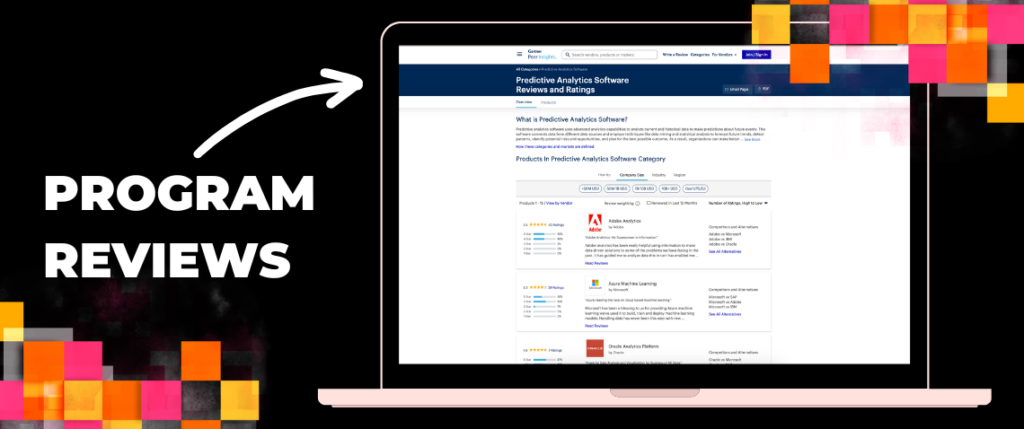The power of predictive analytics, fused with advanced AI strategies, can’t be overstated in the evolving world of marketing. As this technology continues to evolve, it opens a world of possibilities for businesses to find better leads, save more time, save more money, and continue to reach the right people.
For senior living owners and operators, predictive analytics can provide new insights for your strategy and campaigns. This blog aims to share insights that can redefine how you connect with your audience as the owner of a senior living community.
Understanding Predictive Analytics
Predictive analytics is a form of advanced analytics that uses historical data, statistical algorithms, and machine learning techniques to identify the likelihood of future outcomes.
Think of predictive analytics as using your past and present data to make educated guesses about the future. It’s like when you were in school, studying for your exams, and reviewing the course material you predicted would be on the test.
How It Works
- Data Collection: Before you can employ predictive analytics, you must gather as much data as you can. This would be information about your website leads, tour bookings, traffic, social media engagement, advertising metrics, and so on. If we were to use the exam analogy, this would be the time when you compile all your notes from the year in preparation for the test.
- Data Analysis: The next step is making sense of this information. This involves sorting through the data to find patterns, such as periods during the year when tour bookings increase (i.e. around the holidays) or which content performs the best on your blog and social channels. This would be like reviewing textbook chapters that had the most content covered during your classes.
- Model Building: With those patterns identified, you can now create a “formula” or model that can make predictions. This is using what you’ve learned from your past exams to guess what might be on the next one. In predictive analytics, this model uses statistics and machine learning to predict future trends based on past data. We recommend hiring a data scientist or analyst to support you during this set-up period as the model must work as intended.
- Prediction Making: Finally, you use this model to make predictions. Just as you might predict your exam scores based on your study patterns and past performance, senior living communities can use their models to predict future occupancy, website traffic, etc.
In short, predictive analytics is a tool that can help senior living communities make better decisions about their marketing strategy by anticipating what’s likely to happen next.
Benefits of Predictive Analytics in Senior Living Marketing
- Enhanced Personalization: Predictive analytics allows you to create highly personalized marketing campaigns. A study by McKinsey & Company found that personalization in marketing can increase ROI by 5 to 8 times.
- Improved Lead Generation: You can identify quality leads more effectively by analyzing past interactions and behaviours. Yes, we’re serious! Look at what your quality leads did before they came to you and see if there are any patterns. There could be a specific page, blog, search query, or social post that generates better leads. Knowing this information will help you continue to reach the right people who need what your community offers. And by continuing to feed this data into your analytics, you can save more time and marketing resources.
- Optimized Marketing Spend: Predictive analytics can allow for a more efficient allocation of your marketing resources. It’s easier to know where your dollar will be most effective when you can predict the likelihood of certain results and user behaviors.

Facing the Roadblocks
Data Privacy & Security
With predictive analytics relying heavily on vast amounts of data, there’s a significant risk of infringing on individual privacy. Companies must navigate complex data protection regulations, like various state laws in the U.S., which can limit the types of data collected and how it’s used.
Additionally, the more data a company collects, the bigger the target it becomes for cyberattacks. Data breaches can lead to sensitive information being exposed and can severely damage a company’s reputation.
Data Quality & Availability
There’s a saying in the world of data: garbage in, garbage out.
It means that if you have bad data, you’re going to get bad results. This could be inaccurate insights and metrics, a misalignment between you and your users, or even wasting your marketing budget.
Again, predictive models are only as good as the data fed into them. In many organizations, data is fragmented across different departments, making it difficult to collect and analyze comprehensively.
Ethical & Bias Concerns
If the data used to train predictive models contains biases, the models will likely perpetuate or even amplify these biases in their predictions. This is particularly concerning in hiring, lending, and law enforcement.
There are also ethical considerations in how predictive insights are used, especially in sensitive areas like predicting health outcomes, financial status, or behavior. Misuse can lead to discrimination or unfair treatment.
Misinterpretation of Results
There’s a risk that decision-makers might over-rely on predictive models without considering the context or potential inaccuracies. Predictive analytics should support, not replace, human judgment.
The Future of AI in Marketing
By leveraging the latest in predictive analytics, senior living communities can stay competitive and forge deeper, more meaningful connections with their audiences.
The path to mastering AI in marketing is ongoing. We are here to guide you, to grow with you, and to help you establish a strong, credible presence in the senior living market.
To learn more, check out our most recent webinar on AI, or contact us with any questions you have!
You can also download our brand-new eGuide, “A Beginner’s Guide to Predictive Analytics,” to learn more about implementing this strategy for your communities.



